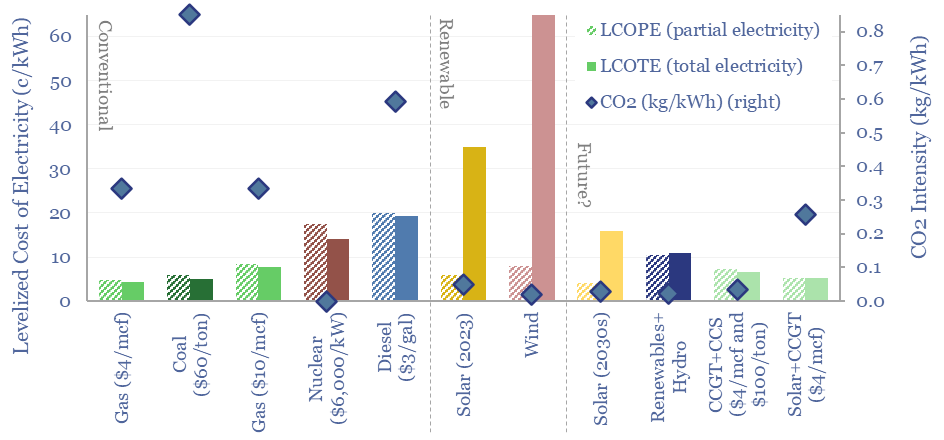The levelized cost of partial electricity (LCOPE) is very different from the levelized cost of total electricity (LCOTE). This 21-page note explores the distinction. It suggests wind and solar will peak at 30-60% of renewable-heavy power grids? And gas is particularly well-placed as a back-up, set to surprise, by entrenching at 30-50% of renewables-heavy grids?
Modelling power grids is one of the most challenging analytical exercises in the energy transition. However, in five years since starting TSE, we think this report contains our most important conclusions.
The report centers on a distinction between LCOPE and LCOTE. LCOPE is the cost to produce Partial Electricity, a partial share of a grid’s electricity, valuing renewable electricity simply “whenever it happens to be generated”. LCOTE is the cost to generate Total Electricity, the total needs of a grid, for example, supporting a 100MW load, 24-hours per day, 7-days per week. LCOPEs and LCOTEs are very different (pages 2-8).
Battery backstops cannot take solar and wind beyond a 30-40% share of most power grids, without excessively high system costs, in the range of $500/ton of CO2 abatement. This is not a normative comment about the importance of decarbonizing, or a comment that is ‘anti-renewables’ (we still think solar is a world-changing technology, whose costs will deflate by another 30-50% from here). It is simply a prediction, driven by economic analysis, per pages 8-15.
The other inescapable conclusion is that natural gas is going to emerge as the most pragmatic and cost-effective backstop for the volatility in renewable-heavy grids. Hence gas is going to ‘surprise’ by entrenching at a 30-50% market share within renewable-heavy grids. Again, this is not some normative comment about what should happen for ideological reasons. It is a prediction, for which our clients can hold us accountable, driven by numbers, per pages 16-21.
The work draws on five-years of modelling of solar costs, onshore wind, offshore wind, gas turbines, coal plants, nuclear plants, hydro and diesel gensets, grid-scale batteries, redox flow batteries, hydrogen backstops, and more broadly in conventional energy and new energies. Please note that the most cost-effective way to access our research is via a TSE subscription.
